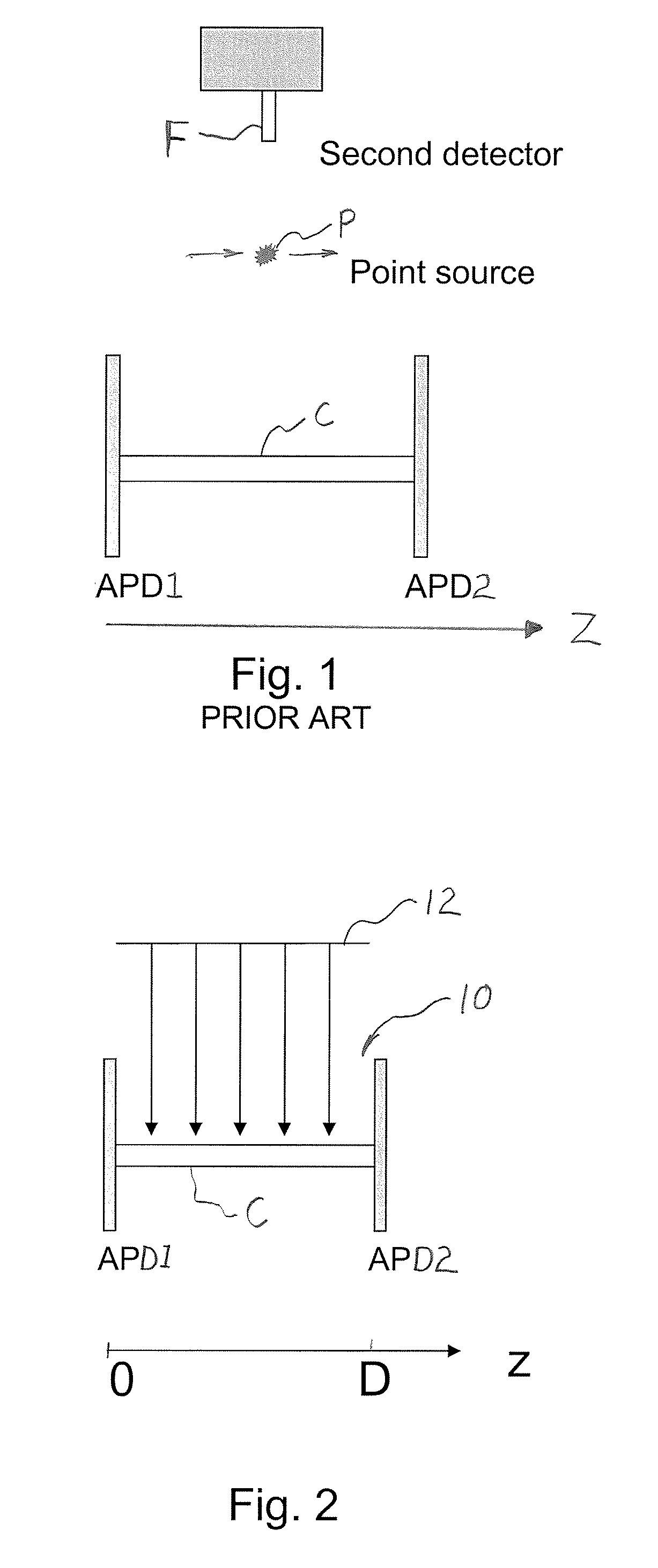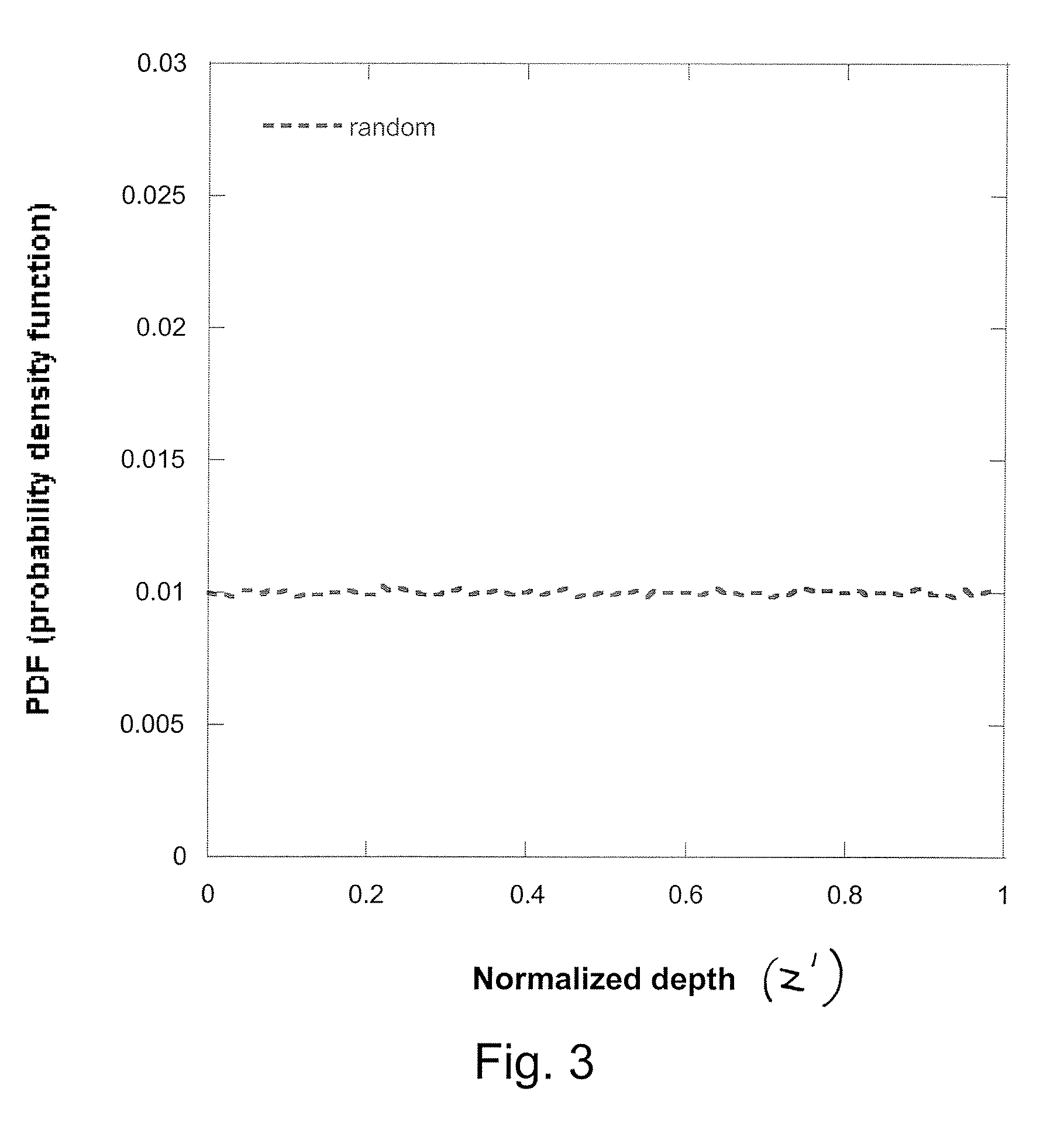Method To Determine The Depth-Of-Interaction Function For PET Detectors
a technology of depth-of-interaction and pet detector, which is applied in the field of positron emission tomography (pet) imaging, can solve the problems of poor spatial resolution, current pet detectors can only detect two-dimensional signals, and pet has faced a fundamental technical challenge in image resolution
- Summary
- Abstract
- Description
- Claims
- Application Information
AI Technical Summary
Benefits of technology
Problems solved by technology
Method used
Image
Examples
Embodiment Construction
[0022] This invention provides a new and innovative method for calibrating three-dimensional PET detectors by applying probability techniques to the problem of calibration. The method is simple, efficient, and accurate, and can be used for the development, installation, and diagnostic use of three-dimensional PET detectors. The method provides a calibration process involving only a small number of settings which can be easily made or automated if desired. Consequently, the method of the present invention will be attractive to manufacturers and users of PET imaging equipment. While the present invention is described herein with reference to detection of gamma ray interactions, it applies equally well to x-ray interactions.
[0023] The present invention requires only a stationary uniform radiation source which can be very easily set; it does not require any mechanism for moving the source or an additional detector as in other methods. Thus, the calibration method of the present inventi...
PUM
 Login to View More
Login to View More Abstract
Description
Claims
Application Information
 Login to View More
Login to View More - R&D
- Intellectual Property
- Life Sciences
- Materials
- Tech Scout
- Unparalleled Data Quality
- Higher Quality Content
- 60% Fewer Hallucinations
Browse by: Latest US Patents, China's latest patents, Technical Efficacy Thesaurus, Application Domain, Technology Topic, Popular Technical Reports.
© 2025 PatSnap. All rights reserved.Legal|Privacy policy|Modern Slavery Act Transparency Statement|Sitemap|About US| Contact US: help@patsnap.com



